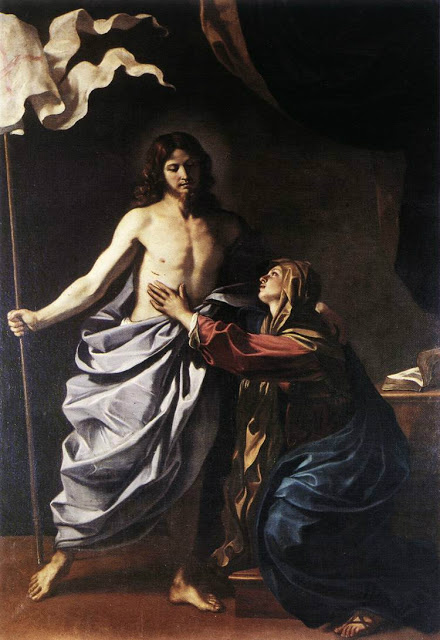Regina Cœli Lætare
From Easter Sunday, until Holy Trinity Sunday, instead of the Angelus, Catholics are required to recite The Regina Cœli Lætare, prayer, three times a day: 6:00 a.m., 12:00 p.m., & 6:00 p.m.
-
REGINA CŒLI, LÆTARE
Regina Cœli, lætare ! Alleluia.
Quia quem meruisti portare : Alleluia.
Resurrexit sicut dixit : Alleluia.
Ora pro nobis Deum : Alleluia.
℣. Gaude et laetare, Virgo Maria : Alleluia.
℟. Quia surrexit Dominus vere : Alleluia.
Oremus.
Deus, qui per resurrectionem Filii tui Domini nostri Jesu Christi mundum lætificare dignatus es; præsta, quæsumus, ut per ejus Genitricem Virginem Mariam perpetuæ capiamus gaudia
vitæ. Per eumdem Christum Dominum nostrum. Amen. -
QUEEN OF HEAVEN, REJOICE
Queen of Heaven, rejoice. Alleluia.
For He whom thou wast made worthy to bear. Alleluia.
Hath risen, as He said. Alleluia.
Pray for us to God. Alleluia.
℣. Rejoice and be glad, O Virgin Mary. Alleluia.
℟. For the Lord hath risen indeed. Alleluia.
Let us pray.
O God, who through the resurrection of thy Son our Lord Jesus Christ hast vouchsafed to give joy to the whole world; grant us, we beseech Thee, that, through the intercession of the Virgin Mary his Mother, we may obtain the joys of eternal life. Through the same Christ our Lord. Amen.
Paschal Anthem to the Blessed Virgin - Regina Cœli
There is a venerable tradition connected with this joyous Anthem. It is related that a fearful pestilence raged in Rome, during one of the Easters of the pontificate of St. Gregory the Great. In order to propitiate the anger of God, the holy Pope prescribed a public procession of both people and clergy, in which was to be carried the portrait of our Blessed Lady painted by St. Luke. The procession was advancing in the direction of Saint Peter's; and as the holy Picture, followed by the Pontiff, was carried along, the atmosphere became pure and free from pestilence. Having reached the bridge which joins the City with the Vatican, a choir of Angels was heard singing above the Picture, and saying: “Rejoice, O Queen of heaven, alleluia! for He whom thou deservedst to bear, alleluia! hath risen, as he said, alleluia!” As soon as the heavenly music ceased, the saintly Pontiff took courage, and added these words to those of the Angels: “Pray to God for us, alleluia!” Thus was composed the Paschal Anthem to our Lady. Raising his eyes to heaven, Gregory saw the destroying Angel standing on the top of the Mole of Hadrian, and sheathing his sword. In memory of this apparition, the Mole was called the Castle of Sant’ Angelo, and on the dome was placed an immense statue representing an Angel holding his sword in the scabbard.
Taken from: The Liturgical Year – Paschal Time, Vol. I, Edition 1871.
